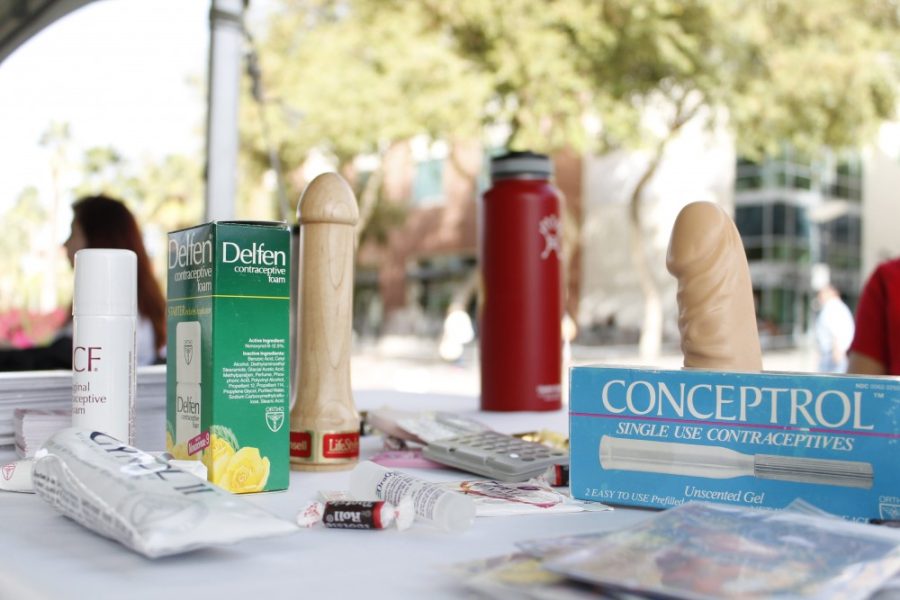The UA held its annual Spring Break Safety Fair on Wednesday to encourage students to stay safe and stay alive.
Over 40 organizations took to the UA Mall to spread the word of safe travel, safe sex and safe partying.
The annual Spring Break Safety Fair, hosted by the University of Arizona Police Department, invited both on and off campus entities to share tips and tricks on how students can protect themselves during a week of school-free activities.
Rene Hernandez, public information officer and crime prevention specialist for UAPD, said the planning process for the event began September 2015 in conjunction with the Associated Students of the University of Arizona and the Student Health Advisory Committee.
Joining UAPD, the Tucson Police Department and Arizona Department of Public Safety were the U.S. Consulate representatives, who wanted to let students know they’ve got their backs in case of trouble across the border.
If students find themselves in trouble with the law, a victim of a crime or with a medical issue, they are able to contact the nearest U.S. Consulate for help.
With students planning for alcohol-filled trips, the MedCats group wanted students to be aware of alcohol poisoning and its symptoms.
Luke Wohlford, a sophomore studying physiology and mathematics, was representing MedCats at the fair and explained what students should look for regarding alcohol poisoning in a friend.
“Most importantly we want them to be safe, while in terms of recognizing alcohol poisoning, just seeing a lot of the signs and symptoms,” Wohlford said. “The biggest ones [are] erratic breathing, slow breathing, unresponsive or unconscious.”
Wohlford said one trick students can do to check if their friend is getting enough oxygen is attempting to match their breathing pattern.
“If you feel out of breath doing that, then they are not getting enough oxygen,” Wohlford said. “The most important thing to do is call 911, because no life is worth wondering if you are going to get in trouble with police if you’re a minor.”
Echoing the advice of Wolhford, Susan Kinkade, registered nurse trauma outreach coordinator for Banner — Health University Medical Center also wanted students to understand alcohol and be aware of how much they are drinking.
“It doesn’t matter whether you are drinking a can of beer or a glass of wine or a shot of alcohol, it has the same amount of alcohol in it,” Kinkade said. “Just be safe and be aware of what you are drinking, know the laws, that if you go to Mexico and return to the United States, any alcohol in your system is illegal.”
While alcohol consumption may be a large part of students’ spring break activities, Libby Valdez, a public health graduate student with an emphasis in maternal and child health, took to the Mall to make sure students practice safe sex.
“Just stay safe and wear a condom,” Valdez said. “You don’t want to risk bringing home a STD or pregnancy.”
Ultimately, the UAPD Chief of Police, Brian Seastone, just wanted students to understand one thing before they leave for spring break.
“We want them to always be responsible,” Seastone said.”Whether it’s out in the sun, swimming, engaging in alcoholic beverages, any types of relationships, just be really careful out there.”
Follow Lauren Renteria on Twitter.









